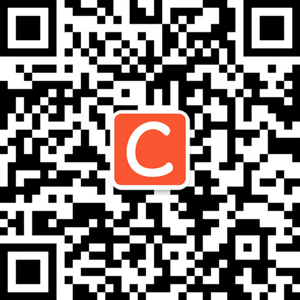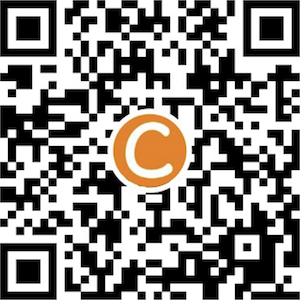
Extensible Authentication Protocols for
IEEE Standards 802.11 and 802.16
David Q. Liu
Department of Computer Science
Indiana University – Purdue University
Fort Wayne, IN 46805, USA
001-260-481-0182
liud@ipfw.edu
Mark Coslow
Department of Computer Science
Indiana University – Purdue University
Fort Wayne, IN 46805, USA
001-(260)-409-1617
coslow@verizon.ne
ABSTRACT
In this paper, the challenges involved in authentication over
wireless networks including wireless LANs, IEEE 802.11, and
WIMAX, IEEE 802.16 are described. Both IEEE 802.11i and
802.16e support EAP (Extensible Authentication Protocol) for
authentication, but do not specify the EAP method required for
authentication. This paper examines four different categories of
EAP methods: legacy methods such as EAP-MD5 and CHAP,
certificate-based authentication methods such as EAP-TLS, EAP-
TTLS, and PEAP; password-based authentication methods, such
as EAP-LEAP and EAP-FAST; and strong password-based
authentication methods such as EAP-SPEKE. The EAP methods
are examined with respect to their vulnerabilities as well as their
convenience of utilization. The legacy methods do not meet the
criteria established by RFC 4017 to be used for wireless
communication. The conclusion is that although certificate-based
authentication methods such as EAP-TLS which is specifically
mentioned in 802.16e have the strongest security, these methods
are not very convenient to use. Password-based authentication
methods, on the other hand, are very convenient to use, but
provide the least amount of security. The strong password-based
authentication methods may be a good alternative to certificate-
based authentication, providing a strong level of security while
being convenient to use as well as providing authentication of the
user as well as the device.
Categories and Subject Descriptors
K.6.5 [Security and Protection (D.4.6, K.4.2)]: Authentication.
C.2.1 [Network Architecture and Design]: Wireless
communication.
General Terms
Design, Management, Security
Keywords
EAP, Extensible Authentication Protocol, IEEE 802.11, Wireless
LAN, IEEE 802.16, WIMAX.
1. INTRODUCTION
In order for a client to establish a secure network connection with
a NAS (Network Access Server) such as an 802.11 a/b/g Wireless
Access Point, it is first necessary for the client and the server to
authenticate themselves. This means that there needs to be some
method of verifying that the client and server are who they claim
to be. EAP (Extensible Authentication Protocol) is a universal
authentication framework defined by RFC 3748 and supported by
IEEE 802.11i and 802.16e. EAP provides the framework for
authentication, but not the specific mechanism by which to
achieve authentication.
The specific authentication methods supported by EAP are called
EAP methods. The specific threats that EAP methods are
supposed to mitigate are detailed in RFC 3748. Originally EAP
was developed for use with PPP or Point-to-Point Protocol
connections and was later adapted for use by wired and then
wireless IEEE 802 networks. In all of these situations, it is
possible for an attacker to gain access to links over which EAP
packets are transmitted. An attacker with access to the link may
try to discover user identities, spoof EAP packets, launch denial of
service attacks, recover passwords using a dictionary attack, and
convince the peer to connect to an unsecure network by launching
a man-in-the-middle attack as well as other types of attacks [1].
To avoid these kinds of attacks it is extremely important that the
EAP method that is chosen is able to provide secure
authentication so that a secure PMK (Pair-wise Master Key) can
be established between the client or user and the network access
point. The PMK is then used for the encryption session which
uses TKIP (Temporal Key Integrity Protocol) or CCMP (Counter
Mode with Cipher Block Chaining Message Authentication Code
Protocol).
Currently there are over 40 different EAP methods that are
available. These EAP methods can be divided into four different
categories legacy methods, certificate-based methods, password-
based methods, and strong password-based methods. Legacy
EAP methods were the very first EAP methods and were first
defined by RFC 3748 or before EAP was established. CHAP and
EAP-MD5 are examples of legacy EAP methods. Certificate-
based EAP methods use Public Key Infrastructure or PKI to
secure communication to an authenticator or authentication server.
Examples of Certificate-based EAP methods are EAP-TLS, EAP-
TTLS, and EAP-PEAP. Password- based EAP methods are EAP
methods which rely upon user defined passwords to provide
Permission to make digital or hard copies of all or part of this work for
personal or classroom use is granted without fee provided that copies are
not made or distributed for profit or commercial advantage and that
copies bear this notice and the full citation on the first page. To copy
otherwise, or republish, to post on servers or to redistribute to lists,
requires prior specific permission and/or a fee. The International
Conference on Mobile Technology, Applications & Systems 2008
(Mobility Conference), 10-12 September, 2008, Ilan, Taiwan. Copyright
2008 ACM 978-1-60558-089-0. $5.00.














































